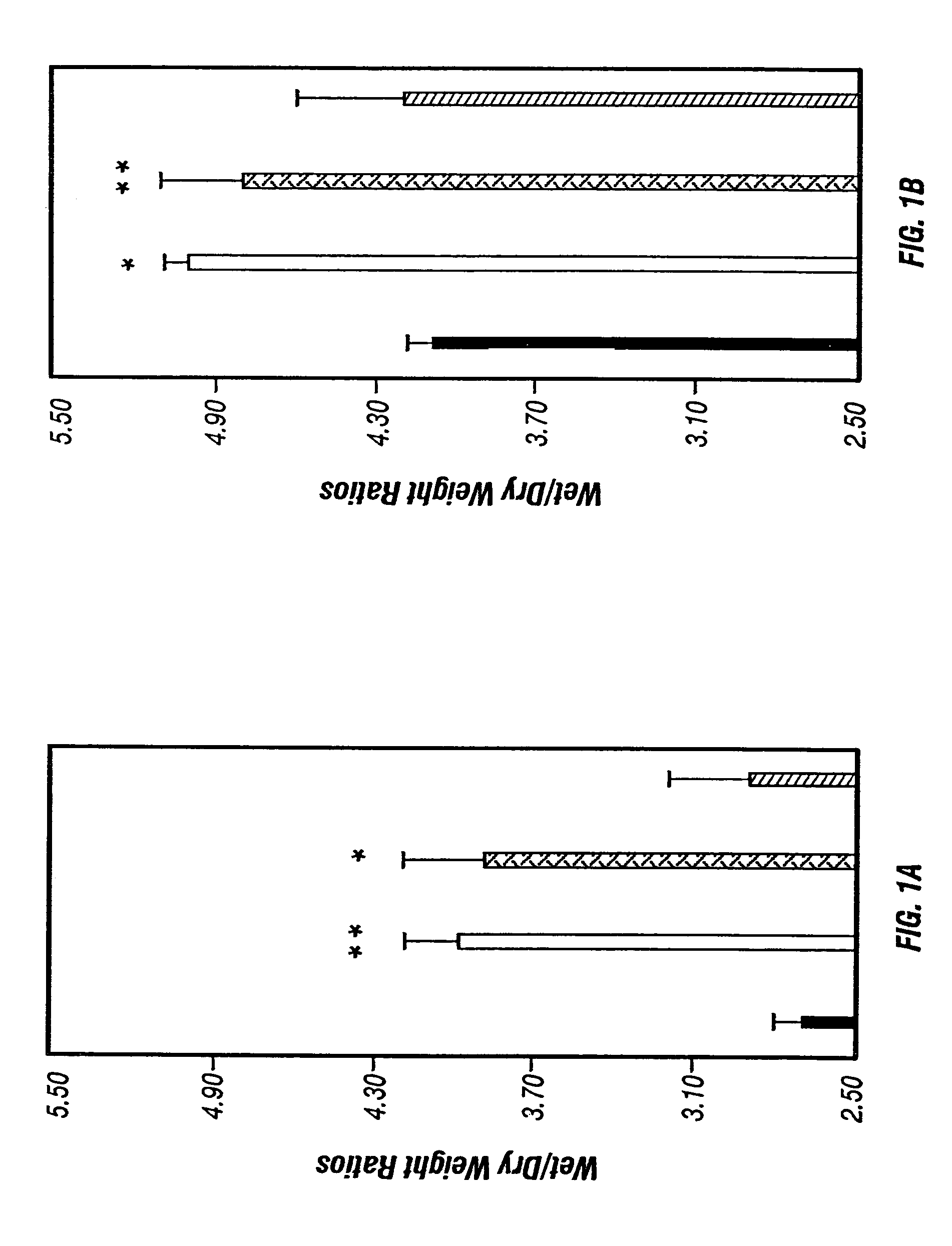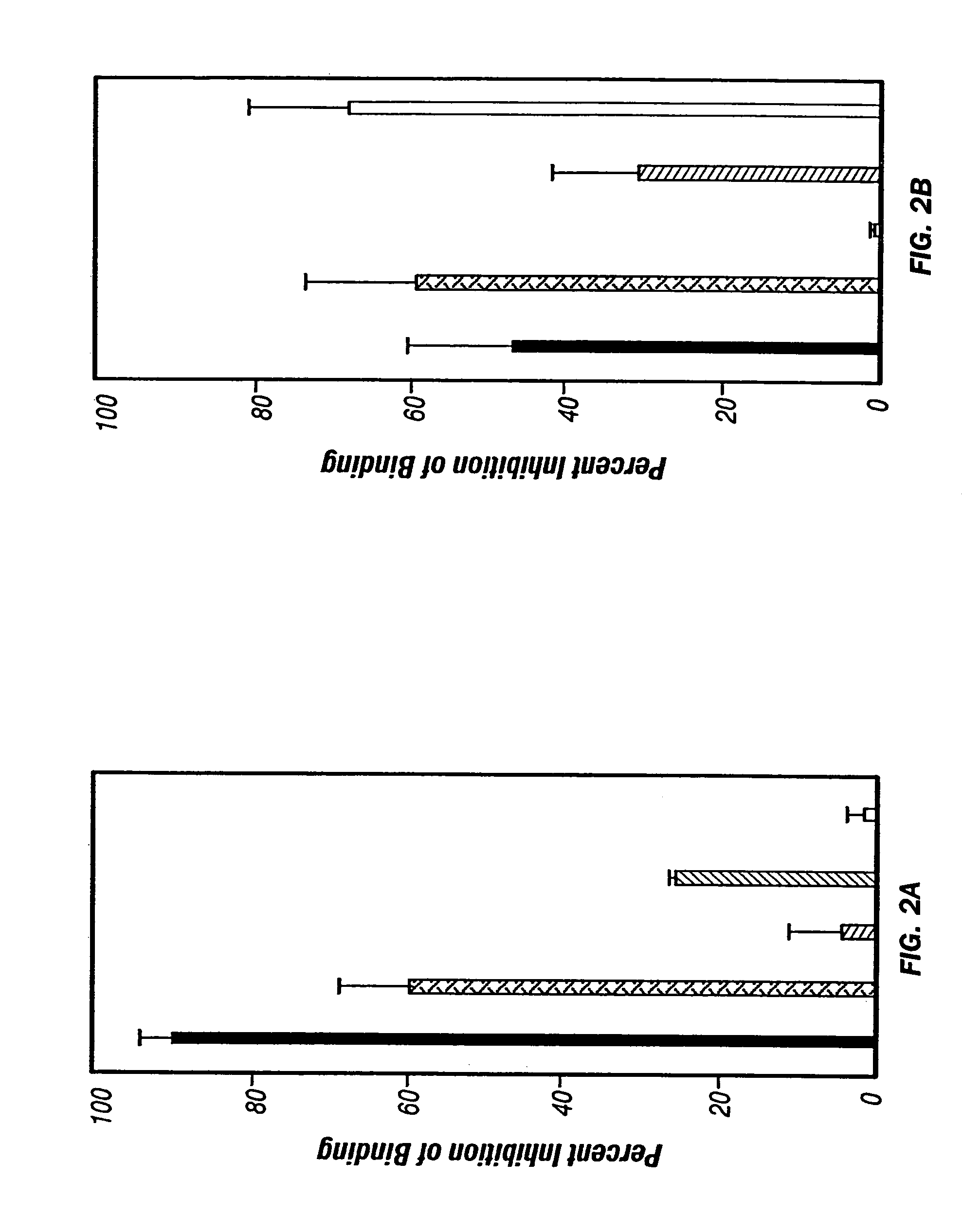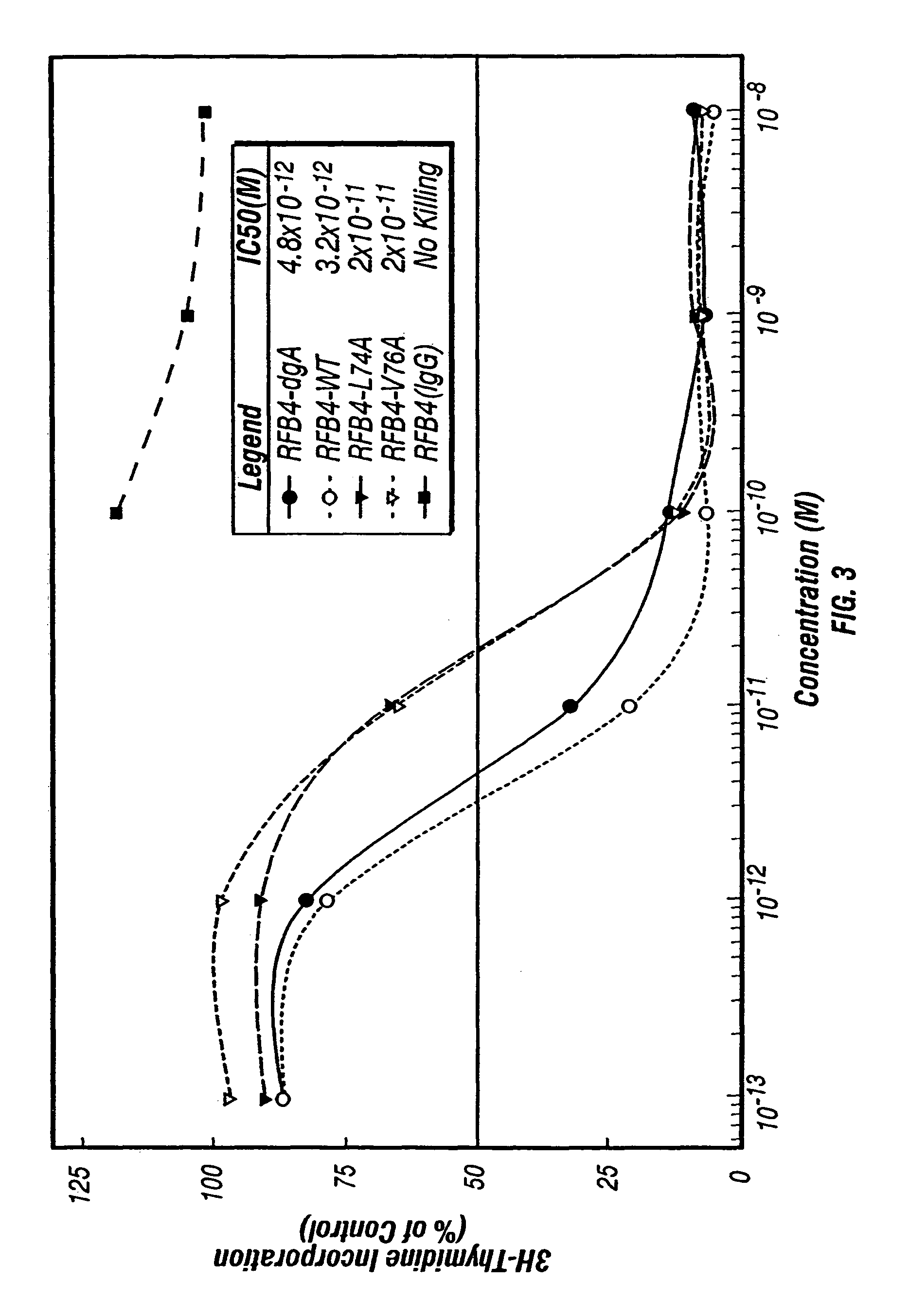Compositions and methods for modifying toxic effects of proteinaceous compounds
- Summary
- Abstract
- Description
- Claims
- Application Information
AI Technical Summary
Benefits of technology
Problems solved by technology
Method used
Image
Examples
example 1
Structural Motif for Initiating Vascular Leak Syndrome
[0240]This example demonstrates that a three amino acid sequence motif, (x)D(y), in toxins and IL-2 is responsible for damaging vascular ECs. Short (<20 amino acid) (x)D(y) motif-containing peptides from RTA or IL-2 which contained flanking glycines and a cysteine, as well as peptides with deleted or mutated sequences were generated. These peptides were attached via the cysteine to a mouse IgG1 Mab (RFB4) not reactive with HUVECs. The VLS-inducing ability of this IgG-peptide conjugate (IgG-RTA) in three VLS model systems was compared. The first was in vitro damage to human umbilical endothelial cells, (HUVECs) (Soler-Rodriguez et al., 1993); the second was in vivo fluid accompanied in mouse lungs (Baluna and Vitetta, 1996); and the third was in vivo human skin xenografts in SCID mice (Baluna and Vitetta, 1998).
[0241]Peptide Synthesis. A peptide representing 13 amino acids (residues 69-81, SEQ ID NO:1) from RTA, with added N- and ...
example 2
Reduced Pulmonary Vascular Leak in Mice
[0260]In this example, it was demonstrated that the enzymatic site or the putative VLS-inducing site in RTA can be mutated without effecting the activity of the other site. The results showed that an active site mutant (E177D) induces EC damage and pulmonary vascular leak while one particular LDV mutant (L74A) makes an active IT but does not induce this damage. Thus, a single amino acid change (L74A) yields an RTA with the desirable properties of IT activity with reduced vascular damage. These results demonstrate that it is now possible to generate an effective RTA-containing IT which does not cause VLS.
[0261]Plasmids and mutagenesis. It has been shown that E177 in RTA is one of several amino acids involved in the active site and that an E177D mutant has greatly reduced enzymatic activity. The pKK223 plasmid with (wt RTA gene) and the pUC 18 plasmid (E177D), both under IPTG-inducible control (O'Hare et al., 1987; Simpson et al., 1995). In addit...
example 3
Production and Purification of dgRTA
[0277]Inland Laboratories has formally produced dgRTA. However, the following example describes a procedure for producing dgRTA for use in the present invention.
[0278]A powdered acetone extract of castor beans is the starting material. Ricin is extracted from this powder, the ricin is deglycosylated, separated into A and B chains, and the dgRTA is purified.
[0279]Bulk raw material, powdered acetone extract of castor beans, can be purchased from Sigma Bulk Chemical Sales. The material arrives in plastic bottles which have a 1.0 L capacity and contain 200 grams of powder. The bottles are stored in a locked cabinet until the procedure is initiated.
[0280]Table 7 lists the composition of the buffers and solutions needed for the procedure and Table 8 lists the specifications for the buffers and solutions. Table 9 lists the equipment used for the production and purification of dgRTA and Table 10 provides a summary of the steps and columns used in the proc...
PUM
| Property | Measurement | Unit |
|---|---|---|
| Temperature | aaaaa | aaaaa |
| Mass | aaaaa | aaaaa |
| Mass | aaaaa | aaaaa |
Abstract
Description
Claims
Application Information
 Login to View More
Login to View More - R&D
- Intellectual Property
- Life Sciences
- Materials
- Tech Scout
- Unparalleled Data Quality
- Higher Quality Content
- 60% Fewer Hallucinations
Browse by: Latest US Patents, China's latest patents, Technical Efficacy Thesaurus, Application Domain, Technology Topic, Popular Technical Reports.
© 2025 PatSnap. All rights reserved.Legal|Privacy policy|Modern Slavery Act Transparency Statement|Sitemap|About US| Contact US: help@patsnap.com



